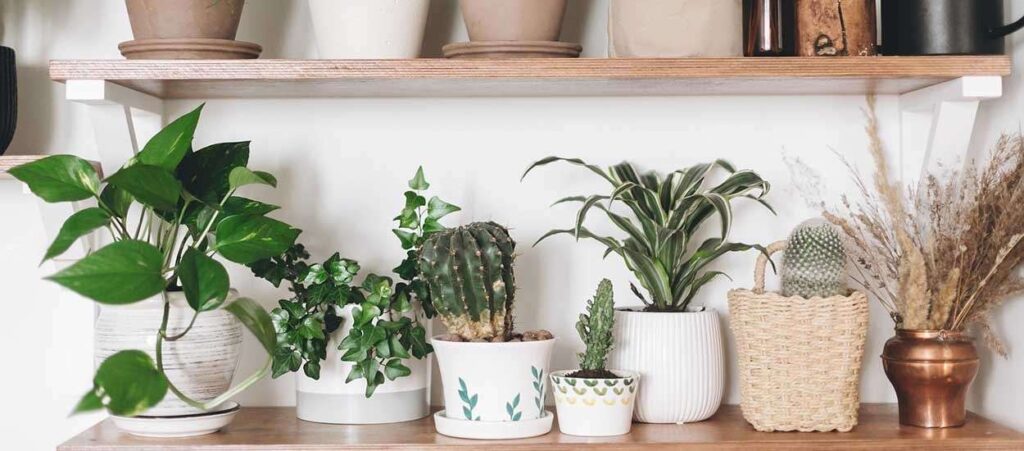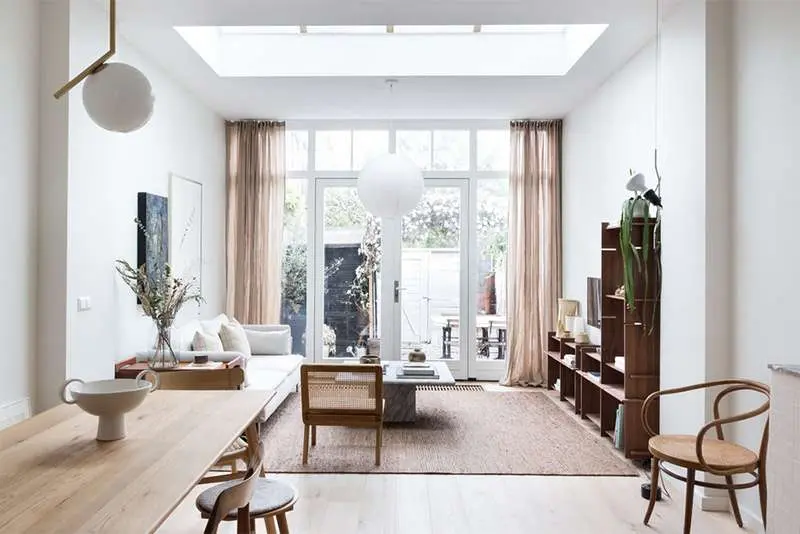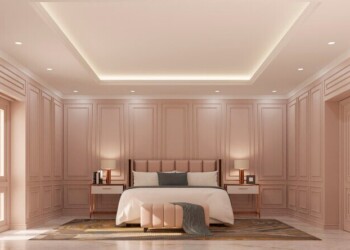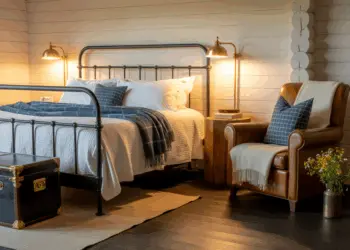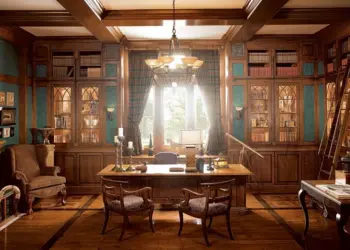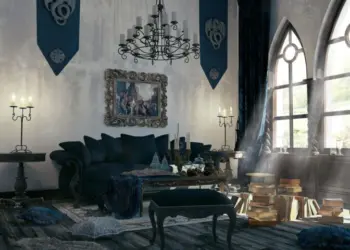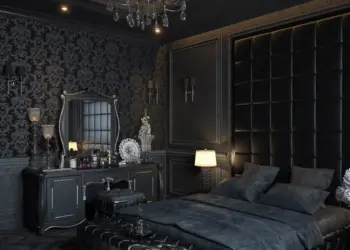From the “slow” concept to slow decoration
Today’s society pushes us to be on all fronts. Professional success, education of our children (school, activities, leisure), shopping, housework, car maintenance, administrative tasks… In short, we no longer have a minute to ourselves! It is in this context that the “slow” concept emerged. Finally a decompression valve!
First, with the Slow Food movement. Launched in the 1980s in Italy by Carlo Petrini, journalist and food critic, Slow Food invites us to rediscover the taste of real food, to prefer quality to tasteless food, quickly prepared and eaten.
Since then, the “slow” has invited itself for our greatest pleasure, in many fields: slow cosmetics, slow fashion, slow travel, slow design, slow working, slow living, slow home, slow management, slow life… and of course slow decoration!
Living “slow” means taking a step back from your lifestyle, thinking differently about your consumption, devoting value to every moment, to every sensation.
What can be found in slow decoration?
An ethical and environment-friendly decoration
This first point is essential to the slow decoration spirit. It is above all a sustainable decoration based on ecological and ethical values.
Ecological side:
In order to respect the environment, we use renewable resources, durable and recyclable products. This ecological awareness allows us to consume differently.
For example, the choice of materials will be based on wood from eco-managed forests, organic production without pesticides, without materials harmful to nature, solvent-free paints, which respect the environment and our health…
Ethical side:
Respect for nature is a thing, but respect for the conditions in which the object was made by women and men is just as much. This is why the health of the craftsmen, a decent wage, the non-work of children are essential concerns in the slow decoration.
It is on the basis of these ecological principles that the art of reuse emerged.
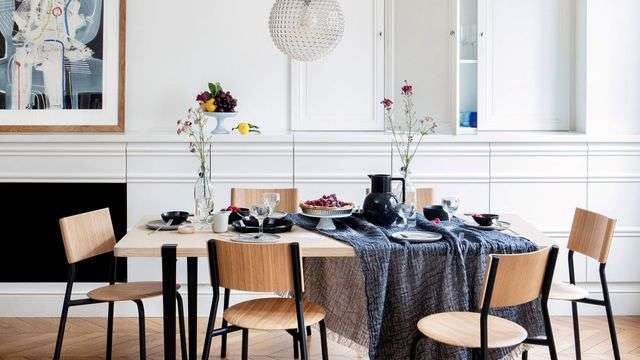
The art of reuse: from recovery to upcycling
In slow decoration, it is a question of doing with what we already have on hand!
Today, when an object does not please us anymore, does not correspond to our needs or is broken, we throw it away. And that’s how we find tons of waste in nature that we don’t know what to do with.
In the art of reuse, the simplest is recovery. An object can either be reused as it is because it corresponds to our interior, or renovated to our taste without changing its role.
You can find them in flea markets, specialized sites, at Emmaus… Objects deposited on the sidewalks are also another way to make nice finds. These “waste” or “treasures”, depending on where you stand, find a new life in your home. All you have to do is open your eyes and be imaginative!
If you know how to tinker a bit, you will be conquered by upcycling or overcycling. It is the transformation of a scrap into an object that has a higher value than the old one. This transformation requires less energy than making it entirely. It also allows you to give free rein to your creativity!
Apart from recovery and overcycling, one of the other options of slow deco can be the manufacture or purchase of objects preferably made of natural materials.
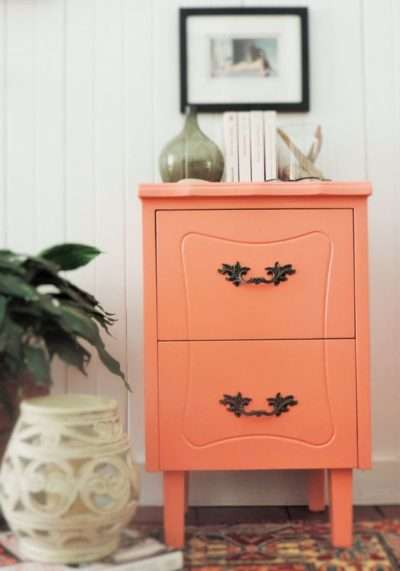
The use of natural materials in slow decoration
Natural materials offer a wide range of possibilities to decorate our homes.
Wood, preferably raw, is present in furniture, parquet and decorative objects. It gives our interiors a warm atmosphere. It can be combined with various other materials.
Terracotta, earthenware, stoneware, porcelain, marble, stone and glass are also widely used, especially for tiles, kitchen, bathroom and decorative objects.
Natural fibers, such as rattan, linen, wool, cotton, and leather, are used to make linens, curtains, carpets, and furniture.
Paper can be used to make beautiful lamps and cardboard for some furniture.
Various metals (iron, copper, tin…) can also find a place in our interiors.
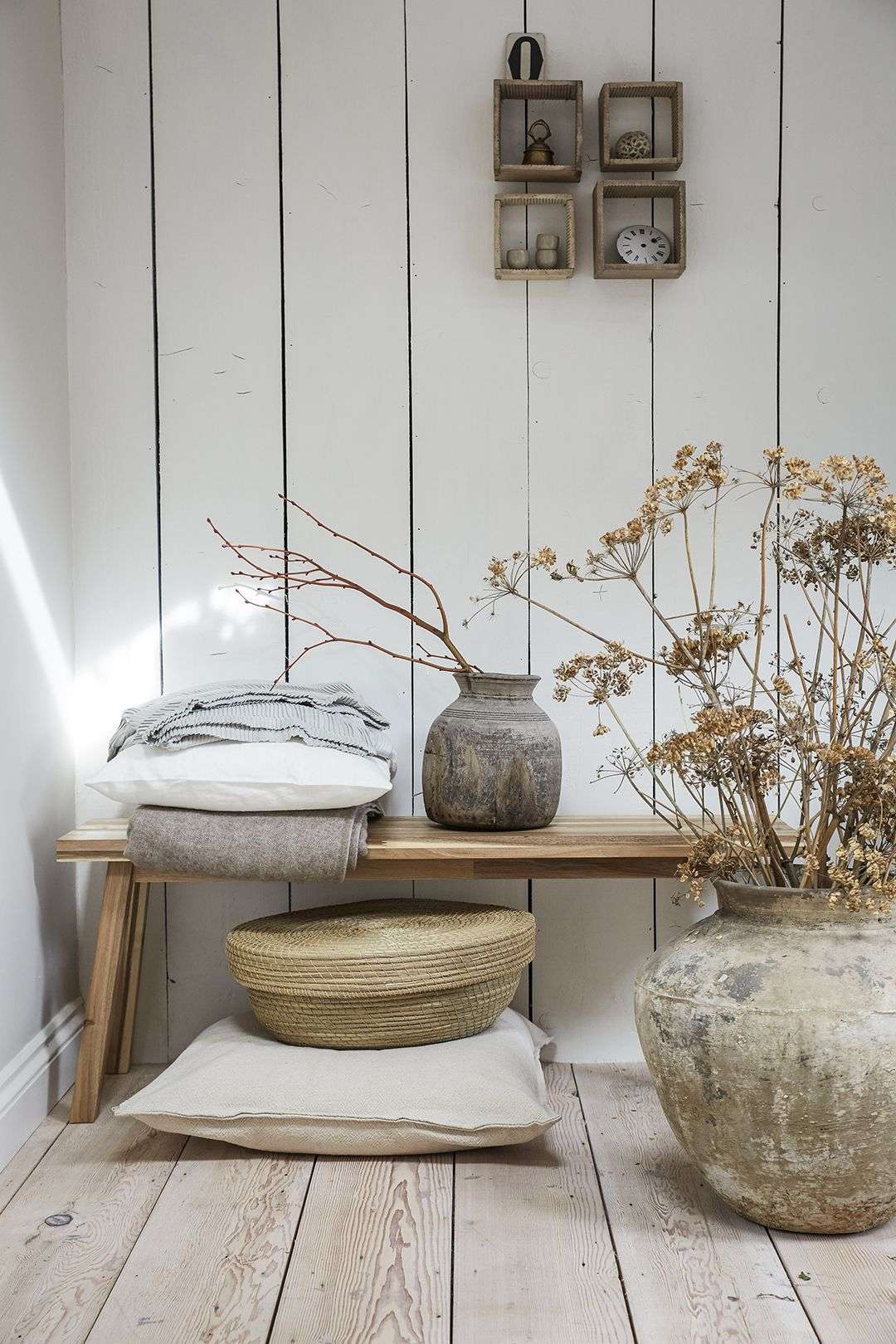
The slow decoration, all in simplicity and minimalism
“Simplicity is the ultimate sophistication,” said Leonardo da Vinci. A minimalist, functional design with pure lines and simple forms contributes to visual harmony and our sense of well-being.
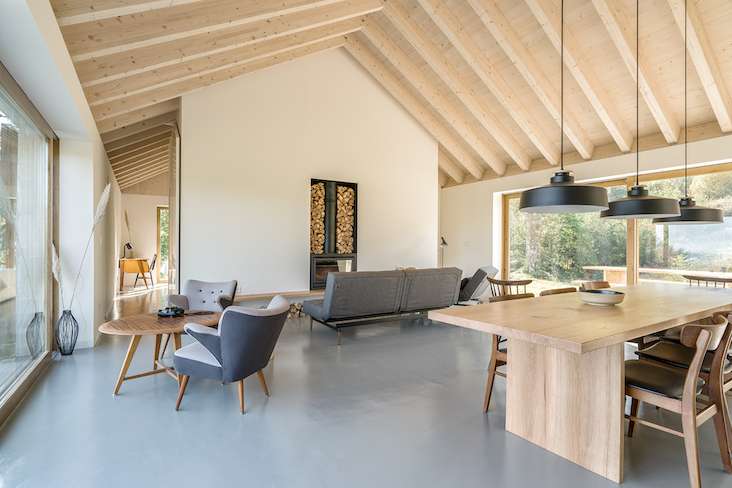
Unique objects or made in small series
Objects made preferably by hand, hand sewn, hand knitted, hand finished … give them a certain charm.
Without even being a handyman, you can draw and make certain objects according to your inspiration of the moment or thanks to a tutorial (“Do it yourself” or “DIY”). Neither of these objects totally looks like the other. The handmade adds an extra soul to the decoration!
Slow decoration is also objects specifically designed by creators and made in very small quantities by craftsmen. As opposed to standardized furniture,
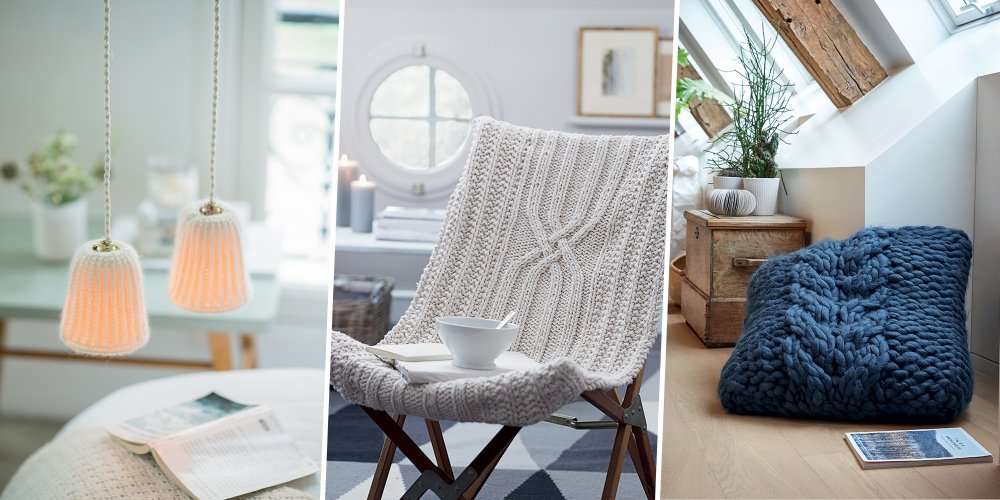
Slow decoration awake our senses
Slow decoration also stimulates our senses.
The touch
We do not skimp on soft and soothing materials that awaken our senses to the touch: the soft woolen carpet in which we push our feet as in a cloud, the soft cushions that welcome us warmly, the plaids …
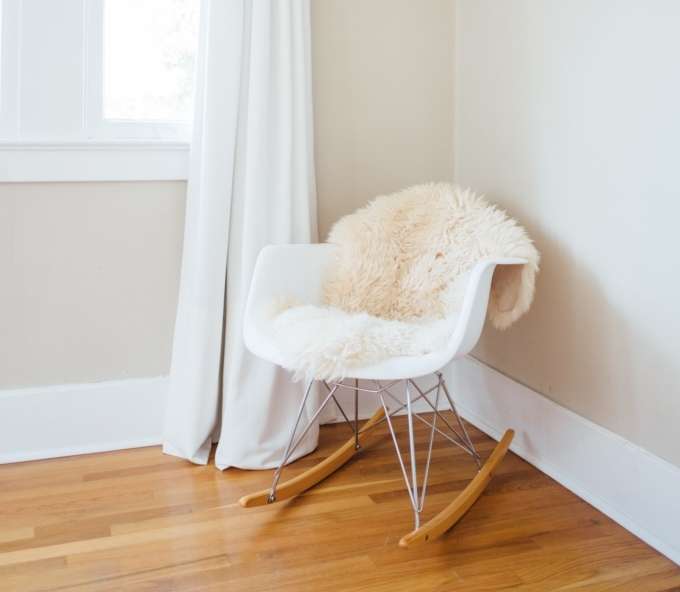
The sense of smell
For example, simple natural scented candles are placed here and there to diffuse light and natural scents.
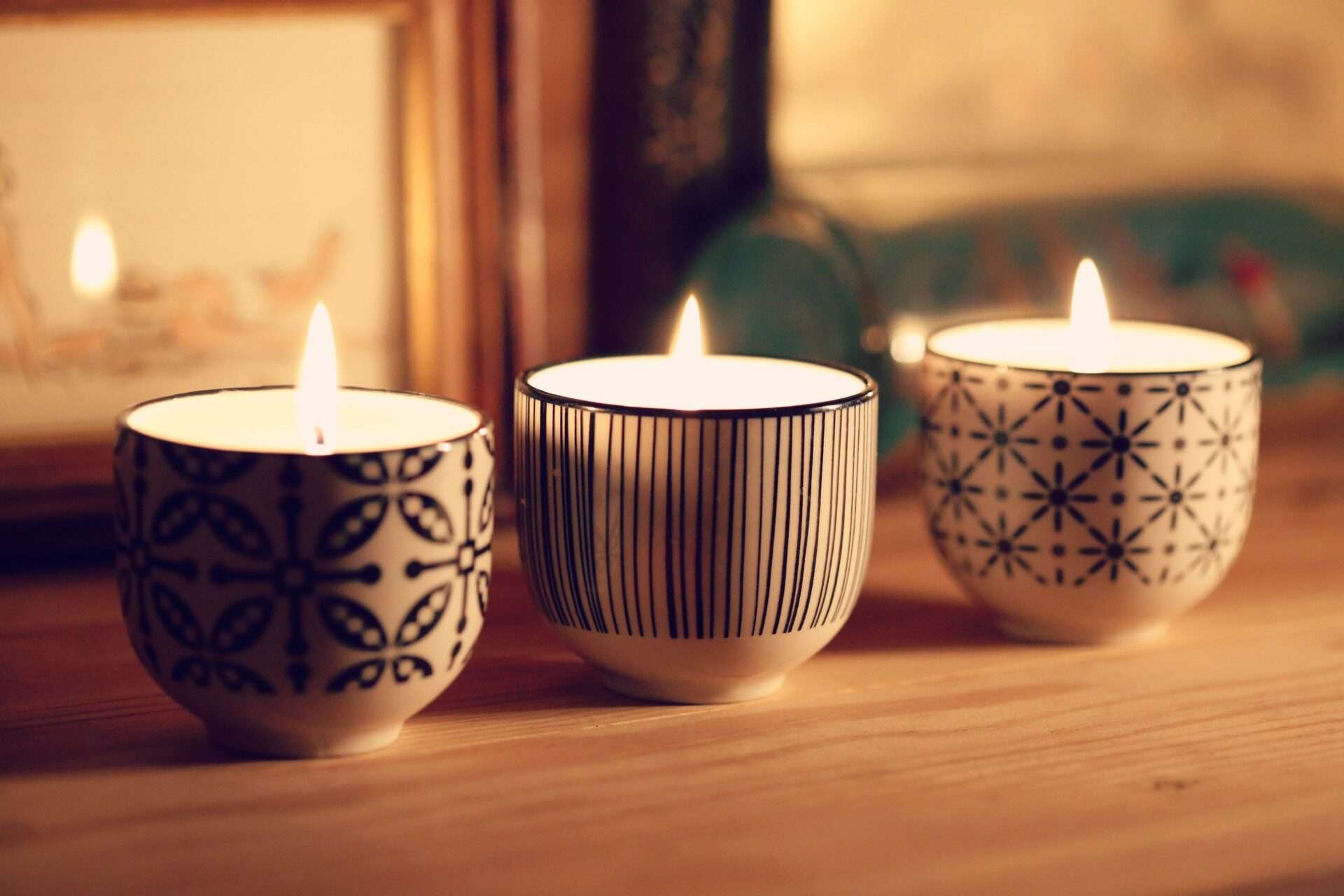
The view
A harmony of soft and relaxing colors combines white, pastel colors, beige …
Hearing
We promote a muffled atmosphere thanks to materials that absorb noise (thick fabrics, wood …).
The play of light
First of all, the light is made to enter through the objects that reflect it. Mirrors, small metallic, copper, silver and gold objects bring a touch of glamour to our interiors.
Putting our faith in pretty lamps will give us pleasure to look at them even in broad daylight. They are placed in the four corners of the room, which contributes to our well-being at night.
Finally, why not place candles in the room so that we can use them at the right moments for soft lighting during one-on-one evenings or just for our own pleasure?
Slow decoration is plants in our homes.
Bringing plants into living spaces means bringing a touch of greenery into our interiors all year round. A natural decoration par excellence. In addition, indoor plants can make the air of the house healthier.
In short, slow decoration is a simple, natural, sustainable, beautiful and eco-responsible decoration. A serene atmosphere, conducive to rest and well-being that we need so much after a stressful day. A haven of peace and softness. Our “home sweet home”!
Slow decoration is a decoration that matures and builds over time. It is an invitation to relax, to live in harmony with one’s interior, while preserving our environment. And you, what do you think of slow decoration?
